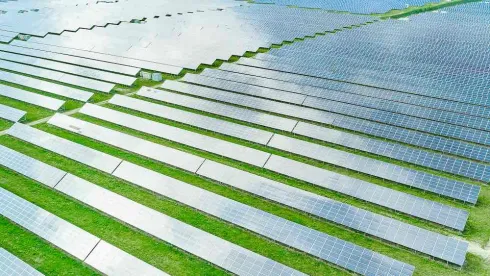M-RETS DEVELOPS FIRST HOURLY RENEWABLE ENERGY CERTIFICATE RETIREMENT
On March 1st, M-RETS announced that it had completed the first-ever hourly Renewable Energy Certificate (REC) retirement. The hourly REC retirement system ensures that each hour of a user’s operation is matched to actual renewable energy produced at the same time. In the current dominant practice, renewable energy purchasers receive RECs issued monthly and match them to load over one year or longer. In the hourly REC retirement system, by contrast, renewable energy purchasers can match RECs to energy usage over more precise intervals by making use of hourly energy usage data.
M-RETS is proposing a four phase process to integrate this hourly REC retirement system into the wider REC marketplace. The first phase will involve providing REC markets with access to hourly generation data by attaching it as an additional attribute to the existing REC framework. The second phase will involve integrating relevant energy market data in addition to existing hourly data. The third phase will require developing an industry consensus on managing the full lifecycle of hourly certificates to support more specific hourly accounting claims and procurement strategies. The fourth and final phase will provide a mechanism for more specific hourly claims to include claims associated with other benefits such as carbon.
In theory, hourly RECs could become a powerful tool to estimate more accurately avoided greenhouse gas emissions associated with renewable energy production by using static and/or dynamic data on top of current REC market data. RECs that possess more detailed avoided emissions data could further encourage renewable energy buyers to make procurement decisions based on hourly avoided emissions. Accordingly, M-RETS believes that the hourly REC retirement system is an important step towards establishing more data-driven renewable energy markets that will drive greater decarbonization.
FERC APPROVES SAA BETWEEN NEW JERSEY BPU AND PJM FOR OFFSHORE WIND TRANSMISSION
On February 16th, the Federal Energy Regulatory Commission accepted a State Agreement Approach (SAA) between the New Jersey Board of Public Utilities (NJ BPU) and PJM Interconnection LLC (PJM) to incorporate a new offshore wind transmission project as part of PJM’s expansion planning procedures. The SAA will allow NJ BPU to propose a state-initiated transmission project for inclusion within PJM’s Regional Transmission Expansion Plan (RTEP) and associated studies as part of the 2021-2022 RTEP cycle. In order to be included, NJ BPU will be responsible for the project costs, and the agreement calls for opening a competitive solicitation process by the end of March 2021. The milestones set forth in the agreement would require NJ BPU to select a project in mid- to late-2022. The agreement is the first of its kind for PJM, and will help the state of New Jersey to integrate 7.5 gigawatts of offshore wind by 2035.
On February 26th, NJ BPU held a transmission technical conference with various stakeholders and consultants from the offshore wind industry to discuss a variety of configurations for the planned transmission project, focusing on the various risks and benefits of each option. The options range from radial lines coming ashore from individual projects with upgrades to existing onshore facilities, to a networked offshore transmission “backbone” that several projects will feed into before the energy crosses the beach. The NJ BPU has not made any decisions as to its preferred approach, and will evaluate proposals from both transmission developers and generation developers before making any such selection.
MAJOR SOUTHERN UTILITY PLANS TO CLOSE COAL FACILITIES BY 2030
On February 19th, Dominion Energy submitted its new integration resource plan to South Carolina regulators, demonstrating the utility’s intent to remove coal-fired electricity from its South Carolina energy mix by 2030. Through a mix of conversion and wholesale replacement, Dominion has committed to replacing more than 1,700 MW of coal-fired electricity with natural gas, solar energy, and battery storage by the end of the decade.
The new plan by Dominion comes at the behest of the Public Service Commission of South Carolina, in keeping with the state’s 2019 Energy Freedom Act. The Act requires specific energy source procurement for major power producers. As a result, Dominion will close three coal-fired facilities in Eastover and Goose Creek by 2028 (1,294 MW combined) and will convert a 415 MW coal plant in Cope to operate on natural gas by 2030.
SIEMENS ENERGY DETAILS USE FOR DOE HYDROGEN FUNDING GRANT
On March 1st, Siemens Energy announced how it would use the US$200,000 hydrogen research grant it received from the U.S. Department of Energy. Siemens Energy will study large-scale hydrogen production, as well as a form of energy storage for renewable power, and evaluate their efficiency in storage against more traditional models like the lithium ion battery technology. One study will research the use of hydrogen to help convert a coal-fired power plant in Utah to a natural gas fired power plant blended with 30 percent hydrogen. Siemens Energy will work with Intermountain Power Project to complete this objective, which is expected to generate 840MW of electricity in Utah for use in Southern California.
Another initiative will be a pilot program in partnership with Duke Energy and Clemson University to evaluate and test the use of its Silyzer electrolyzer to produce hydrogen in order to power Duke Energy’s natural gas turbine in its power plant located on the University’s campus.
MALTA INC. CLOSES ON SERIES B FUNDING FOR LONG-DURATION THERMAL STORAGE
On February 24th, the Massachusetts-based grid-scale electro-thermal energy-storage technology developer, Malta Inc. (Malta), announced it had closed a Series B funding round of US$50 million. Malta’s technology converts electricity into heat, which it stores in molten salt, and simultaneously runs off cold energy which is stored in vats of a cooling liquid similar to anti-freeze. The heat and cold are converted back into electrical energy using a heat engine which runs off the temperature difference.
Malta’s system purports to store energy for up to 200 hours, scales easily, and can provide heat for industrial processes and district heating. The company has begun work on a commercial-scale plant. Malta is one of several companies developing thermal energy storage technologies to meet the global demand for long-duration, low-cost energy storage solutions to support the transition to a renewable-energy grid.
Nathan C. Howe and Orethu Manu contributed to this article.






 />i
/>i

